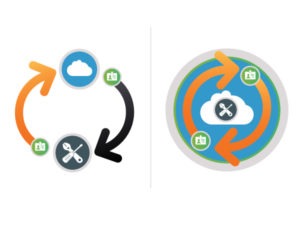As a seller in 2022, it is more than likely you are familiar with Salesforce. If your team has taken its Salesforce capabilities a step forward by utilizing a sales engagement tool, then you are also more than likely to have heard of Salesloft, a main player in this industry. For those who are not aware of what they are, how they work together, or if you even need both, keep reading to learn more about Salesloft and Salesforce. At the end, we will share our recommendation for making the best sales tech stack.
Is Salesloft a CRM?
The first big question would be is Salesloft a CRM? Without knowledge of the product offerings, or just a brief general understanding of sales tech stacks, it may seem like Salesloft is a CRM. However, this is not the case. Salesloft is technically a sales engagement platform, which means it is a tool designed to help your sellers engage with prospects and customers. It does not provide the same functionalities as a CRM, like Salesforce.
However, by using the two together, sellers run into many problems such as data sync issues and data discrepancies, since Salesloft and Salesforce do not work together natively. Salesloft has its own separate contact database, so essentially, using them together gives a sales team two different CRMs, which is not 100% efficient or effective.

What is the Difference Between Salesloft and Salesforce?
So, now that a baseline has been set on the dynamic between the two products, here is a little bit more about what they both provide for your team. In terms of Salesloft, it is used to help sellers engage with prospects and customers. This ranges from helping with emailing campaigns to providing different call features.
On the other hand, Salesforce is a CRM. In fact, the Salesforce name has become synonymous with CRM, since it is the industry leader in this space. Salesforce provides customer data, marketing help, lead management, and so much more. Salesforce also has their own sales engagement platform, High Velocity Sales, which acts as their sales engagement platform for those who buy it.
How do Salesloft and High Velocity Sales Compare?
While both are sales engagement platforms, there are some key differences between Salesloft and High Velocity Sales. Both provide the same general sales engagement capabilities. These capabilities include automated cadences for sellers, a dialer, and their reporting and data tools. Salesloft does all these on their own platform, outside of Salesforce. High Velocity Sales has these same features, but within Salesforce. This is the main difference between sales engagement tools. Some live outside of Salesforce, while others live natively within Salesforce.
Salesloft is one of these non-native options. This causes issues that many sellers face such as data sync issues, reporting accuracy concerns, and more. High Velocity Sales on the other hand, is native to Salesforce, which eliminates these common issues. But, be warned: High Velocity Sales, while native, does not provide the best service when compared to other native solutions.
What's the Better Native Solution?
Naturally, the next question would be asking what the best native solution is. This is where Salesvue comes into play. Salesvue, unlike Salesloft, lives natively within Salesforce. However, it is much more robust than High Velocity Sales. For example, it allows more flexibility and features, such as allowing sellers to run cadences around opportunities.
By providing the same features as other sales engagement platforms on top of looking and feeling just like Salesforce, Salesvue stands head and shoulders above the competition. It is truly the best of both worlds. Do not settle for a non-native sales engagement tool and subject yourself to the headaches and pains that many sellers deal with. Also, do not limit yourself to a lower quality solution. Salesvue is the easiest to use and most powerful Salesforce-native sales engagement platform.
Category
Tags
Subscribe to Funnel Vision
Get the latest and greatest right in your inbox






